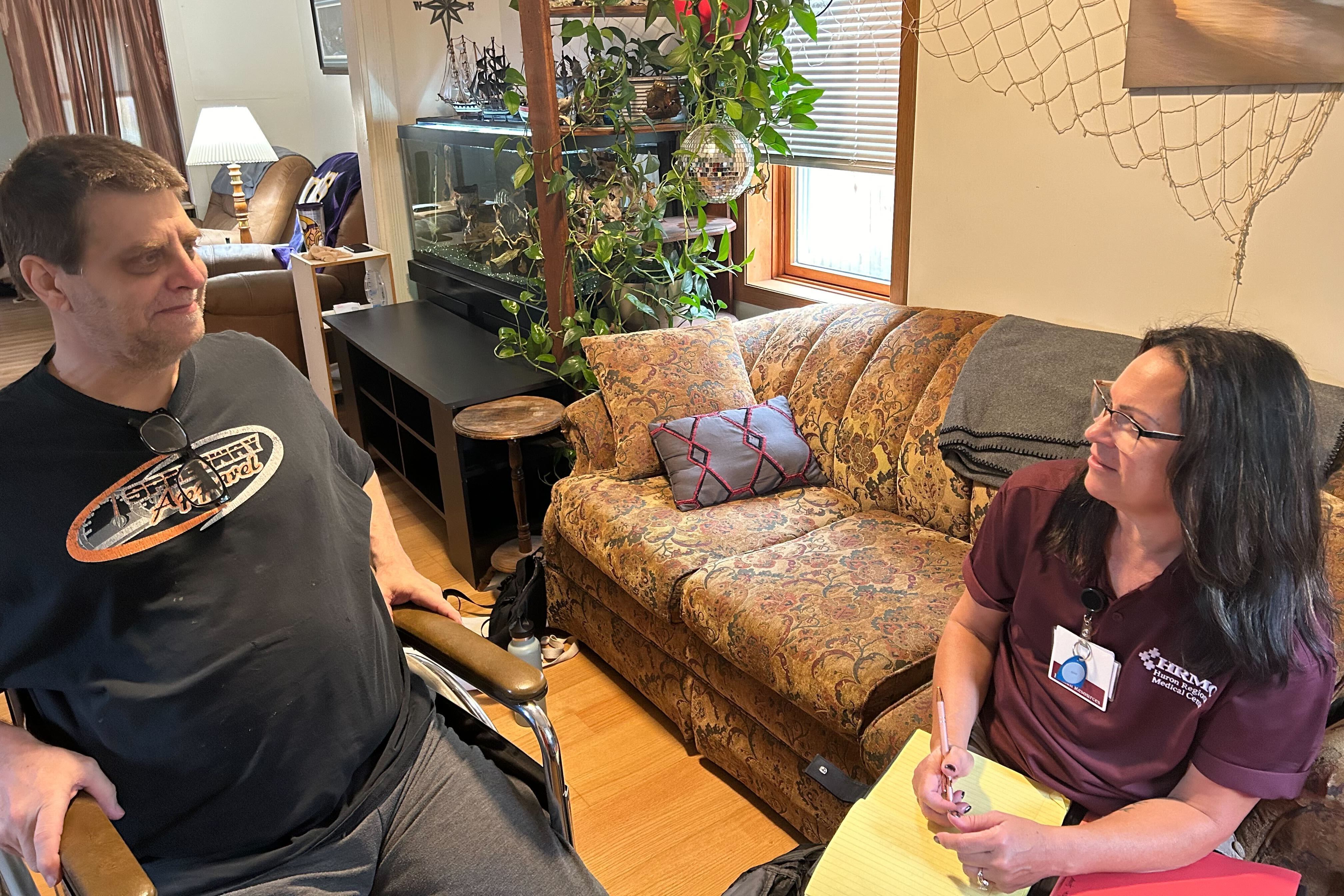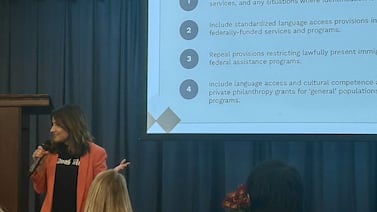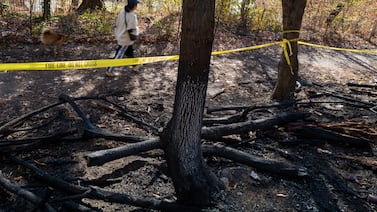HURON, S.D. — Kelly Engebretson was excited to get fitted for a prosthetic after having part of his leg amputated. But he wasn’t sure how he’d get to the appointment.
Nah Thu Thu Win’s twin sons needed vaccinations before starting kindergarten. But she speaks little English, and the boys lacked health insurance.
William Arce and Wanda Serrano were recovering from recent surgeries. But the couple needed help sorting out their insurance and understanding their bills.
Engebretson, Win, Arce, and Serrano were fortunate to have someone to help.
They’re all paired with community health workers in Huron, a city of 14,000 people known for being home to the state fair and what’s billed as the world’s largest pheasant sculpture.
Three workers, employed by the Huron Regional Medical Center, help patients navigate the health system and address barriers, like poverty or unstable housing, that could keep them from getting care. Community health workers can also provide basic education on managing chronic health problems, such as diabetes or high cholesterol.
Community health worker programs are spreading across the United States, including in rural areas and small cities as health providers and state and federal governments increasingly invest in them. These initiatives gained attention during the coronavirus pandemic and have been found to improve people’s health and access to preventive care while reducing expensive hospital visits.
Community health worker programs can address common barriers in rural areas, where people face higher rates of poverty and certain health problems, said Gabriela Boscán Fauquier, who oversees community health worker initiatives at the National Rural Health Association.
The workers are “an extension of the health care system” and serve as a link “between the formality of this health care system and the community,” she said.
The programs are often based at hospital systems or community health centers. The workers have a median pay of $23 an hour, according to the federal Bureau of Labor Statistics. Patients are typically referred to programs by clinicians who notice personal struggles or frequent visits to hospital emergency departments.
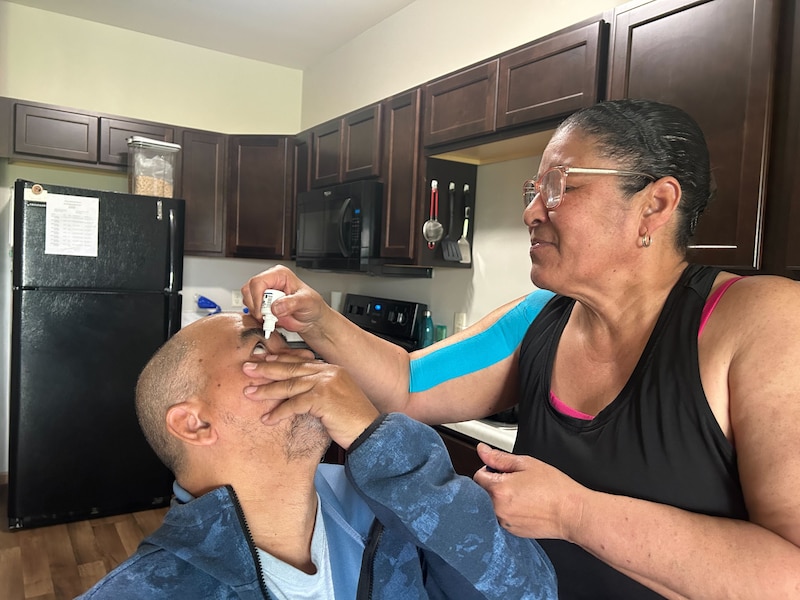
South Dakota program funded by hospital, Medicaid
South Dakota is among the states that have recently funded community health worker programs, developed training requirements for the workers, and approved Medicaid reimbursement for their services. The state’s certification program requires 200 hours of coursework and 40 hours of job shadowing.
Huron Regional Medical Center launched its initiative in fall 2022, after receiving a $228,000 federal grant. The program is now funded by the nonprofit hospital and Medicaid reimbursements.
Huron, a small city surrounded by rural areas, is mostly populated by white people. But thousands of Karen people — an ethnic minority from the Southeast Asian country of Myanmar — began arriving in 2006. Many are refugees. The city also has a significant Hispanic population from the Caribbean, Mexico, and Central and South America.
Mickie Scheibe, one of Huron’s community health workers, recently stopped by the house of client Kelly Engebretson. The 61-year-old hadn’t been able to work since he had part of his leg amputated, due to diabetes complications.
Scheibe helps with “the hoops you’ve got to jump through,” such as applying for Medicaid, Engebretson said.
He told Scheibe that he didn’t know how he was going to get to his prosthetic fitting in Sioux Falls — a two-hour drive from home. Scheibe, 54, said she would help find him a safe ride.
She also invited Engebretson to a diabetes education program.
“Put me down as a definitely absolutely,” he replied, adding that he’d invite his mother to tag along.
The same day, Scheibe’s co-worker Sau-Mei Ramos visited the apartment where William Arce and Wanda Serrano live. Arce was recovering from heart surgery, while Serrano was healing from knee and shoulder operations.
The couple, both 61, moved three years ago from Puerto Rico to be near their children in Huron. Ramos, who’s also from Puerto Rico, coordinated their appointments, answered their billing questions, and helped Arce find a walker and supplemental insurance.
Ramos, 29, handed Arce a pamphlet about heart health and asked him to read the section on angina, the pain that results when not enough blood flows to the heart.
“Qué entiende?” she said, asking Arce what he understood about his condition. Arce, speaking in Spanish, responded that he knew what angina was and what symptoms to watch for.
Later that day, Paw Wah Sa, the third community health worker in town, met with client Nah Thu Thu Win, who moved to Huron in February from Myanmar with her husband and twin 6-year-olds. The Win family, like Sa, are part of the local Karen community, whose people have been persecuted under the military rulers of Myanmar, the country formerly known as Burma.
Win, 29, had assumed the kids would qualify for Medicaid. But unlike most other states, South Dakota does not immediately offer coverage to children who legally immigrated into the United States. The boys’ father hopes to eventually add them to his work-sponsored insurance.
Sa didn’t want the kids to have to wait for health care. The 24-year-old previously took the twins to a free mobile dental clinic in Huron. It turned out they needed more advanced dental work, which they could get free only in Sioux Falls. Sa helped make the arrangements.
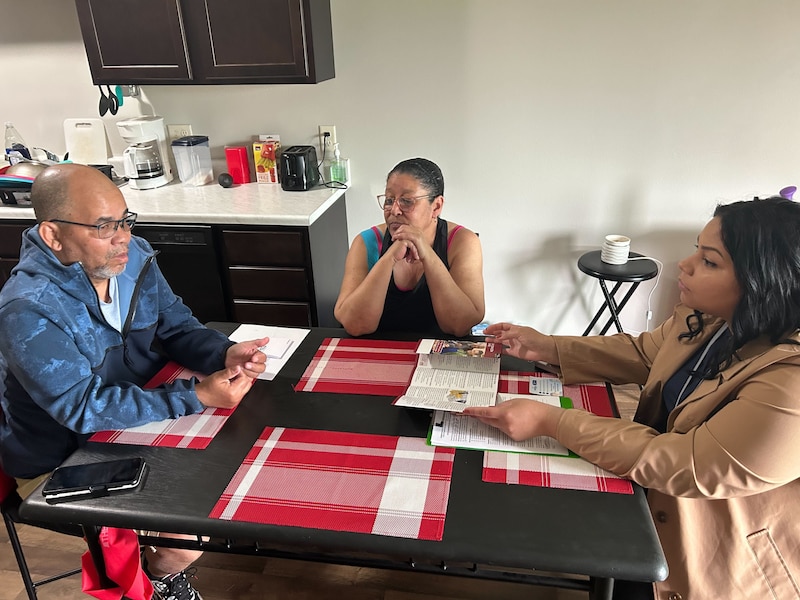
Rural population is becoming more diverse
Many Karen residents and people from rural parts of Latin America had little access to health care before moving to the United States, Sa and Ramos said. They said a major part of their job is explaining what kind of care is available, and when it’s important to seek help.
The three community health workers sometimes take clients grocery shopping, to teach them how to understand labels and identify healthful food.
Boscán Fauquier, with the National Rural Health Association, said that because community health workers are familiar with the cultures they serve, they can suggest affordable food that clients are familiar with.
Rural America’s overall population is shrinking, but the 2020 census showed it has become more diverse as people representing ethnic minorities are drawn to jobs in industries such as farming, meatpacking, and mining. Others are attracted by rural areas’ lower crime rates and cheaper housing.
Boscán Fauquier said many rural community health worker programs serve people from minority groups, who are more likely than white people to face barriers to health care.
She pointed to programs serving Native American reservations, the Black Belt region of the South, and Spanish-speaking communities, where the workers are called promotoras. But community health workers also serve rural white communities, such as those in Appalachia impacted by the opioid crisis.
Medicare, the federal health program for adults 65 or older, has been reimbursing community health worker services since January. Boscán Fauquier said advocates hope more state Medicaid programs and private insurers will allow reimbursement too.
Engebretson said he’s happy to see community health workers across South Dakota, not just in big cities.
The more they “can branch out to the people, the better it would be,” he said.
Arielle Zionts is a reporter for KFF Health News, Healthbeat’s national reporting partner.

